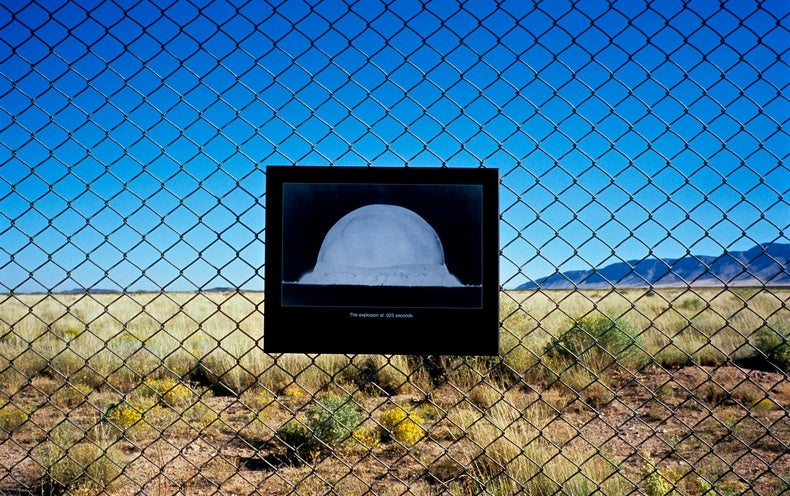Volcanic eruptions can be incredibly destructive natural disasters, covering whole cities with lava, noxious gases and ash. Plus, the seismic activity that produces them can also cause other natural disasters — earthquakes, landslides, tsunamis — that bring about further devastation.
Pompeii may be the best-known ancient city to be ruined by a volcano, in part due to the exceptional preservation of the remains there. But it wasn’t the only one; and some were even larger and more central to the administration of their surrounding cultures.
Here are five examples of historic cities that were wiped out or severely damaged by volcanic eruptions.
Read More: What Was the Biggest Volcanic Eruption in the United States?
1. Pompeii (and Herculaneum)
The paving stones of Via del Foro at Pompeii. (Credit: WitR/Shutterstock)
The residents around Mount Vesuvius should have taken heed when the earthquakes started around A.D. 62. The quakes were strong enough to damage parts of Herculaneum, a resort town popular with Romans at the time, and were only the beginning of a flurry of seismic activity that culminated in the volcano’s eruption in A.D. 79.
Herculaneum and Pompeii were buried first in ash, then pumice rock, over the course of a couple of days. Many citizens were killed, including famous historian Pliny the Elder, and a number of these grisly death scenes were well-preserved in ash.
During his 19th-century excavations, the archaeologist Giuseppe Fiorelli discovered cavities in the cities’ ash layers. When he injected some of these with plaster, they revealed the form of the bodies buried by pumice and ash.
2. Cuicuilco
The Cuicuilco archeological site in Mexico City. (Credit: JuanAriza1/Shutterstock)
The ruins of Cuicuilco sit today in the southern suburbs of Mexico City. Its central surviving feature is a unique circular temple mound: a structure that may have influenced the later pyramids built throughout Mexico and Mesoamerica.
At its height in the 5th century B.C., the population of Cuicuilco was likely around 20,000 — making it one of the largest urban centers in Mesoamerica at the time. Of course, the good times didn’t last.
The Xitle volcano erupted around A.D. 245. By this time, however, many of the city’s residents had already left the city, perhaps having emigrated to the nearby growing city of Teotihuacan.
3. Catania
Catania with Mount Etna in the background. (Credit: Leonid Andronov/Shutterstock)
Catania is still around today, but the Sicilian city experienced near-destruction from nearby Mount Etna several times in history.
One eruption at the beginning of the 4th century B.C. might have changed the course of a war between the Carthaginians, from North Africa, and the local Greeks who had founded Catania centuries earlier. Another eruption, around 122 B.C., reportedly caused roof collapses and fires, and blocked the sun for days.
Read More: 5 Things You Might Not Know About Volcanoes
4. Akrotiri
Ancient Greek pots and amphora discovered in the ruins of Akrotiri. (Credit: steve estvanik/Shutterstock)
Today, Santorini is a beautiful tourist destination, full of white-washed stone houses and Instagram-able moments. But the island, also known as Thera, is the perimeter of a volcanic caldera that erupted sometime between 1620 and 1500 B.C.
The eruption destroyed the local Minoan settlement of Akrotiri; associated earthquakes and tsunamis even damaged Crete, roughly 70 miles to the south of Santorini, and potentially parts of the central palace of the Minoan capital of Knossos.
According to some sources, the eruption and associated earthquakes that destroyed Akrotiri and damaged Crete may have given rise to the legend of Atlantis — which the ancient Egyptians believed was a powerful island destroyed by natural disasters.
5. Shimabara
View from the top of Shimabara Castle with Mount Unzen in the background. (Credit: Ian Kennedy/Shutterstock)
While not exactly ancient, the 1792 eruption of Mount Unzen on the island of Kyushu in southwestern Japan — and its related seismic activity — brought a whole cocktail of disasters.
The eruption itself isn’t believed to be the main cause of most of the 15,000 estimated deaths. But it may have triggered an earthquake that ultimately caused a lava dome to fall off the volcano.
The resulting landslide tore through the city of Shimabara and, as if things weren’t bad enough already, caused a tsunami when it hit the Ariake Sea. The great wave struck the opposing coast of the Ariake Bay during the night, bringing destruction and death to villagers for miles.
Read More: What It Takes for a Volcano to Impact Earth’s Climate














